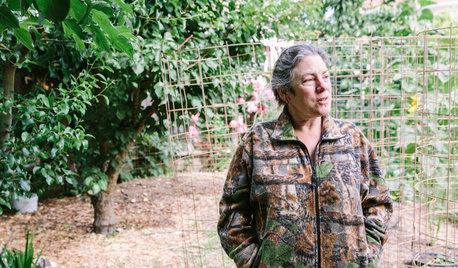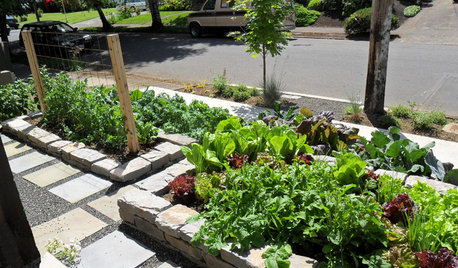Possible to grow all chicken food?
yuliana
15 years ago
Related Stories

FARM YOUR YARD6 Things to Know Before You Start Growing Your Own Food
It takes time and practice, but growing edibles in the suburbs or city is possible with smart prep and patience
Full Story
FARM YOUR YARDTo Get the Food They Believe In, These Urbanites Grow Their Own
Home gardeners farming on their city lots find that local, organic food isn’t the only reward
Full Story
GARDENING GUIDESYes, You Can Grow Food in a Shady Yard
Your shady garden doesn’t have to be forever barren. Berries, herbs and other shade-loving plants can produce a delicious bounty
Full Story
FRONT YARD IDEASWelcome Edibles Into the Front Yard for Fresh Food and More
Give your front yard design a boost and maybe even make new friends by growing fruits and vegetables
Full Story
FARM YOUR YARD10 Easy Edibles to Grow in Containers
These herbs, vegetables and fruits are just as happy in a pot as they are in the ground
Full Story
EARTH DAYGrow a Beautiful Garden With Ecofriendly Greywater
Reducing home water waste means lower bills and a healthier planet. Here's how to set up a greywater home irrigation system that can help
Full Story
FARM YOUR YARDHow to Grow Vegetables in Containers
Get glorious vegetables and fruits on your patio with a pro’s guidance — including his personal recipe for potting mix
Full Story
GARDENING GUIDESYes, You Can Grow an Edible Garden on a Hot, Dry Site
Difficult garden spots don’t need to deter you from planting trees, herbs and other delicious food plants
Full Story
EDIBLE GARDENSSummer Crops: How to Grow Tomatoes
Plant tomato seedlings in spring for one of the best tastes of summer, fresh from your backyard
Full Story
EDIBLE GARDENSSummer Crop: How to Grow Blueberries
Plant blueberries in spring or fall for garden beauty through three seasons — and a sweet superfood in summer
Full Story


trianglejohn
msjay2u
Related Discussions
Best place to grow food on Big Island
Q
Chickens and food crops.
Q
Pet food recall--- Are all these foods actually the same?
Q
All natural cat foods. Are they better?
Q
seramas
brendan_of_bonsai
brendan_of_bonsai
nelda1234
brendan_of_bonsai
runningtrails
paulns
seramas
brendan_of_bonsai
islandmanmitch
brendan_of_bonsai
yulianaOriginal Author
islandmanmitch
brendan_of_bonsai
runningtrails
islandmanmitch
paulns
seramas
runningtrails
seramas
brendan_of_bonsai
runningtrails
brendan_of_bonsai
sustainablesarah
seramas
islandmanmitch
brendan_of_bonsai
runningtrails
brendan_of_bonsai
islandmanmitch
seramas
paulns
yulianaOriginal Author
brendan_of_bonsai
runningtrails
paulns
chrislyn
seramas
velvet_sparrow
msjay2u
seramas
runningtrails
mxbarbie
runningtrails
brendan_of_bonsai
mxbarbie
runningtrails
msjay2u